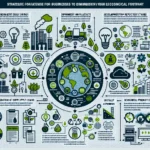In recent years, the topic of creating an inclusive work culture has gained significant traction in IELTS Writing Task 2 essays. This theme has appeared multiple times in past exams and is likely to continue being a popular subject due to its relevance in today’s diverse workplace environments. Let’s explore this topic through the lens of IELTS Writing Task 2, providing you with valuable insights and essay samples to enhance your writing skills.
Analyzing the Essay Question
Let’s focus on a question that closely resembles those seen in recent IELTS exams:
Some people believe that creating an inclusive work culture is the responsibility of company management, while others think it’s the duty of all employees. Discuss both views and give your own opinion.
This question touches on a crucial aspect of modern workplace dynamics. It requires you to consider different perspectives on fostering inclusivity and to formulate your own stance on the matter.
Essay Sample for Band 8-9
Here’s a high-scoring essay sample that addresses the question effectively:
In today’s diverse work environments, the creation of an inclusive culture is paramount for organizational success. While some argue that this responsibility lies solely with management, others contend that all employees play a crucial role. In my opinion, fostering inclusivity is a shared responsibility that requires effort from both leadership and staff.
Those who believe management should be accountable for inclusivity have valid points. Executives and HR departments have the power to implement policies and programs that promote diversity and inclusion. They can establish diversity training, create mentorship programs for underrepresented groups, and ensure fair hiring practices. Moreover, leaders set the tone for the organization’s culture, and their actions can significantly influence employees’ behaviors and attitudes towards inclusion.
On the other hand, proponents of employee responsibility argue that true inclusivity can only be achieved when every individual contributes. Employees interact with each other daily, and their behaviors and attitudes shape the workplace atmosphere. By being open-minded, respectful of differences, and willing to collaborate with diverse colleagues, staff members can create a welcoming environment from the ground up. Additionally, employees can participate in diversity initiatives, provide feedback on inclusion efforts, and actively work to combat unconscious biases.
In my view, the most effective approach to creating an inclusive work culture involves a synergy between management and employees. While management should provide the framework and resources for inclusivity, employees must actively engage in and support these efforts. For instance, leadership can implement a mentorship program, but its success depends on the willingness of employees to participate as mentors and mentees. Similarly, anti-discrimination policies are only effective if employees understand and uphold them in their daily interactions.
In conclusion, fostering an inclusive work environment is a collective endeavor. Management’s role in setting policies and examples is crucial, but equally important is the active participation and commitment of all employees. By recognizing this shared responsibility, organizations can create truly inclusive cultures that benefit from diverse perspectives and talents.
(Word count: 309)
 Inclusive workplace illustration
Inclusive workplace illustration
Essay Sample for Band 6-7
Here’s a sample essay that would typically score in the Band 6-7 range:
Creating an inclusive work culture is important in today’s diverse workplaces. Some people think it’s the job of company managers, while others believe all workers should be responsible. I will discuss both views and give my opinion.
Managers have a big role in making workplaces inclusive. They can make rules that help everyone feel welcome. For example, they can start training programs about diversity and make sure hiring is fair for all people. Managers are leaders, so their actions show others what is right. If a manager treats everyone equally, workers will likely do the same.
However, employees also have a part in creating an inclusive workplace. They work together every day and their actions affect the work environment. When workers are friendly to everyone and respect differences, it makes the workplace more inclusive. Employees can join in diversity programs and speak up if they see unfair treatment. This helps create a good atmosphere for everyone.
In my opinion, both managers and employees need to work together for true inclusivity. Managers should make the rules and provide resources, but employees need to follow these rules and be active in making the workplace inclusive. For example, if a company starts a program to help different groups work together, it will only work if employees join in and try to understand each other.
To conclude, creating an inclusive work culture is not just one group’s job. It needs effort from both managers and employees. When everyone works together, it can make a workplace where all people feel valued and can do their best work.
(Word count: 268)
Key Writing Tips for This Topic
-
Understanding the question: Ensure you address both views presented in the question and clearly state your own opinion.
-
Structure: Use a clear 4-paragraph structure: introduction, view 1, view 2, and conclusion. For band 8-9, include a fifth paragraph with your personal opinion.
-
Vocabulary: Use topic-specific vocabulary related to workplace and inclusivity. For higher bands, incorporate more sophisticated terms and phrases.
-
Grammar: Use a mix of simple and complex sentence structures. Higher bands should demonstrate a wider range of grammatical constructions.
-
Coherence and Cohesion: Use linking words and phrases to connect ideas smoothly. Ensure each paragraph has a clear central topic.
-
Examples: Provide relevant examples to support your points. More specific and diverse examples can help achieve higher scores.
Essential Vocabulary for This Topic
- Inclusive (adjective) /ɪnˈkluːsɪv/ – Not excluding any particular groups of people
- Diversity (noun) /daɪˈvɜːsəti/ – The practice of including people of different types
- Unconscious bias (noun phrase) /ʌnˈkɒnʃəs ˈbaɪəs/ – Unintentional prejudices that influence decisions
- Equality (noun) /ɪˈkwɒləti/ – The state of being equal in status, rights, or opportunities
- Discrimination (noun) /dɪˌskrɪmɪˈneɪʃn/ – Unfair treatment of people based on protected characteristics
- Empathy (noun) /ˈempəθi/ – The ability to understand and share the feelings of others
- Collaboration (noun) /kəˌlæbəˈreɪʃn/ – The action of working with someone to produce something
- Mentorship (noun) /ˈmentɔːʃɪp/ – The guidance provided by a mentor, especially an experienced person in a company
- Inclusivity (noun) /ˌɪnkluːˈsɪvəti/ – The practice or policy of including people who might otherwise be excluded or marginalized
- Cultural competence (noun phrase) /ˈkʌltʃərəl ˈkɒmpɪtəns/ – The ability to understand, communicate with and effectively interact with people across cultures
Conclusion
Creating an inclusive work culture is a crucial topic in modern business discourse and a frequent subject in IELTS Writing Task 2 essays. By understanding the nuances of this topic and practicing with the provided samples, you can improve your ability to write compelling essays on workplace inclusivity and related themes.
For further practice, consider writing essays on related topics such as:
- The impact of diversity on workplace productivity
- The role of technology in promoting workplace inclusivity
- Challenges in implementing inclusive policies in multinational corporations
Remember, the key to excelling in IELTS Writing Task 2 is practice. Try writing your own essay on this topic and share it in the comments section for feedback and discussion. This active practice will help you refine your skills and prepare effectively for the IELTS exam.
For more insights on related topics, you might find these articles helpful:
- How to Create Inclusive Classroom Environments
- How to Promote Diversity and Inclusion in the Workplace
- How to Enhance Workplace Communication
These resources can provide additional context and vocabulary to enrich your understanding and writing on topics related to workplace inclusivity and diversity.


